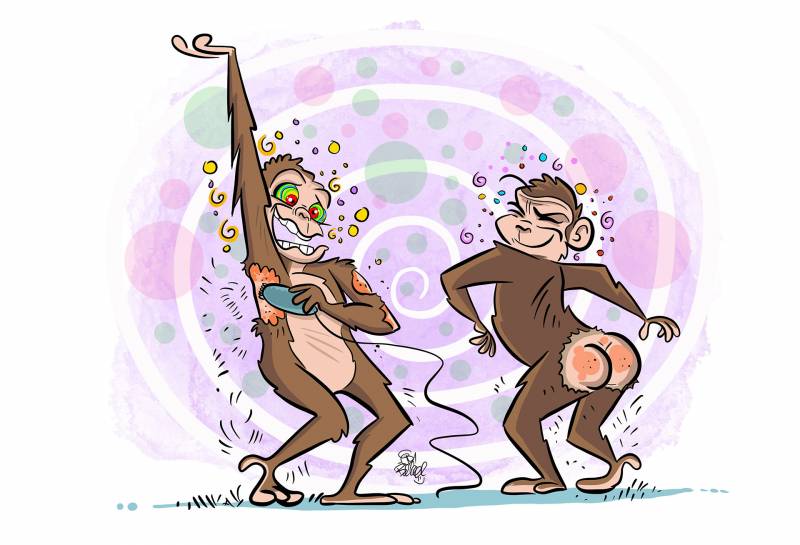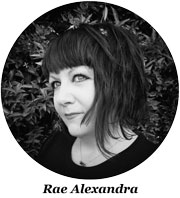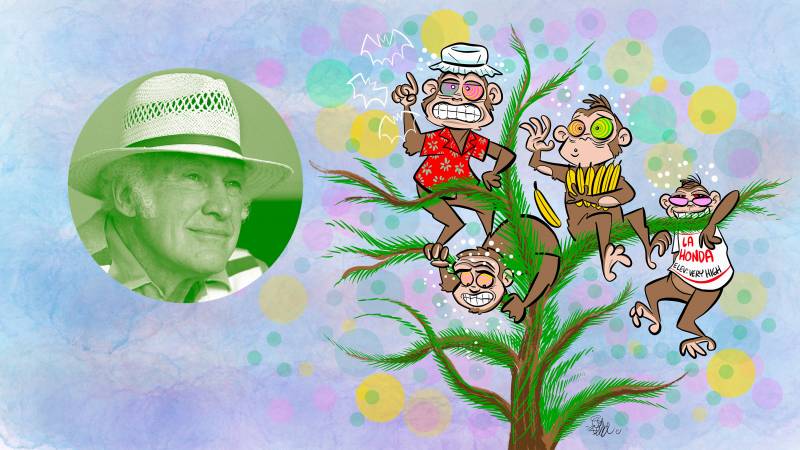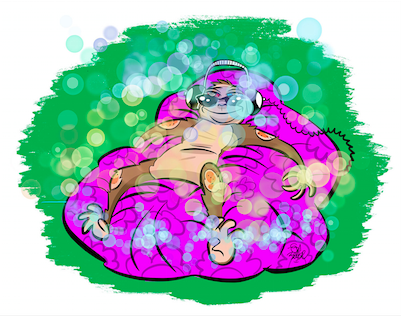I can find no online record of a Bill Marquis ever working at Stanford, but a 2001 article in the Half Moon Bay Review states that he did. It also quotes Monkey Bill as saying: “Kesey is kind of why I came to La Honda [in 1968]. That group had a similar attitude to me on the benefits of LSD. I decided to go and see where Ken Kesey and the Pranksters did their work.” With this in mind, especially given the size and insularity of La Honda, a friendship between Monkey Bill and Kesey lives within the realm of possibility.
One woman who lived with Monkey Bill later in his life says he performed the tests on monkeys “in the early ’60s at Stanford.” In Clyde’s version, Monkey Bill had “25 to 35 primates” in the backyard of his home on Redwood Terrace that decade. If you ask the bartender of Apple Jack’s (an inn just down the hill from Ken Kesey’s old house), the monkeys were kept in Pescadero in a building that now houses the local coffee shop. Though the locations differ, no one disputes that Monkey Bill housed and regularly fed LSD to primates.
Clyde says those tests came to an end when the government shut down the research, and gave orders to euthanize the animals. But by that time, he says, “the amount of LSD everyone was taking was starting to take its toll on egos and psyches.” And so one night, Clyde says, “in a fit of compassion,” while Ken Kesey, the Merry Pranksters and Monkey Bill were “really high on LSD,” they released the primates into the wild.

In the months that followed, sightings of The Shaved were, according to Clyde, rampant. “They were finding monkeys snooping around in people’s houses,” he says. “They were finding them in their driveways, they were finding them dead. And these monkeys are living off people’s garbage. I heard they were friendly to humans. Some people would feed the monkeys and leave food out for them. And I was given the impression that Ken Kesey kept one of these monkeys.”
(This wouldn’t be terribly out of character. Kesey was a well-documented animal lover, keeping dogs throughout his life, as well as a pet parrot in the ’60s. In the ’90s, he kept kangaroo rats. Sadly, I can find no photographic evidence of Kesey with monkeys of any description.)
I ask Clyde if he knows whether Monkey Bill is still around. “I don’t think so,” Clyde shrugs. “By the ’80s, he was this crazy old hermit who never came outside. He was crazy. Like, babbling crazy.” The Apple Jack’s bartender backs this up. “Monkey Bill used to live about four miles up the road from here,” she told me. “He’s gone now. He went a little …” She taps the side of her head as she says this.
The woman in the 2006 documentary said Monkey Bill had gotten better later in life. “He went crazy for a little bit and then he had to stop his work,” she said. Still, in the same video, Monkey Bill was well enough to speak on camera. Unfortunately, the information he offered up through a straggly beard, between drags on a cigarette, ultimately creates more questions than it answers.
“I had contracts with the DEA in case they found a drug on the street that they couldn’t identify,” Monkey Bill says in the video. “They’d run it through the behavioral tests that I’d set up.”
 As I stood on my friend’s deck, drinking tea and admiring the view, a strange noise interrupted the chorus of birdsong.
As I stood on my friend’s deck, drinking tea and admiring the view, a strange noise interrupted the chorus of birdsong.
 “Kids I knew talked about The Shaved,” Clyde explains. “Some had seen one. At first they thought it was a little kid—a lost kid or something. Because it was a little bit taller than knee-high and it was bald. Or at least kind of patchy—a little mangy, right? And so at first they would talk about this lost kid. But then other people said, ‘No, that’s a monkey.’ Because other people had seen this patchy, mangy dog-monkey too.”
“Kids I knew talked about The Shaved,” Clyde explains. “Some had seen one. At first they thought it was a little kid—a lost kid or something. Because it was a little bit taller than knee-high and it was bald. Or at least kind of patchy—a little mangy, right? And so at first they would talk about this lost kid. But then other people said, ‘No, that’s a monkey.’ Because other people had seen this patchy, mangy dog-monkey too.”


